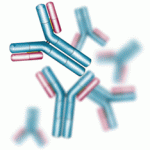Immunology
|
26 august 2015 14:15:19 |
| Morphological change of CD4 + T cell during contact with DC modulates T-cell activation by accumulation of F-actin in the immunology synapse (BMC Immunology) |
|
Tweet Background:
The changes in T-cell morphology during immunological synapse (IS) formation are essential for T-cell activation. Previous researches have shown that T cell changed from spherical to elongated and/or flattened during in contact with B cell. As most powerful antigen presenting cell, dendritic cell (DC) has a strong ability to activate T cells. However, the morphological change of T cell which contacts DC and the relationship between morphological change and T-cell activation are not very clear. Thus, we studied the morphological change of CD4
+
T cell during contact with DC.
Results:
Using live-cell imaging, we discovered diversity in the T-cell morphological changes during contact with DCs. The elongation-flattening of CD4
+
T cells correlated with a low-level Ca
2+
response and a loss of T-cell receptor (TCR) signalling molecules in the IS, including zeta-chain associated protein kinase 70 (ZAP-70), phospholipase C-γ (PLC-γ) and protein kinase C-θ (PKC-θ), whereas rounding-flattening correlated with sufficient CD4
+
T-cell activation. Different morphological changes were correlated with the different amount of accumulated filamentous actin (F-actin) in the IS. Disruption of F-actin by cytochalasin D impaired the morphological change and the localisation of calcium microdomains in the IS and decreased the calcium response in CD4
+
T cells.
Conclusion:
Our study discovered the diversity in morphological change of T cells during contacted with DCs. During this process, the different morphological changes of T cells modulate T-cell activation by the different amount of F-actin accumulation in the IS, which controls the distribution of calcium microdomains to affect T-cell activation. |
| 115 viewsCategory: Immunology |
 Innate and Adaptive Humoral Responses Coat Distinct Commensal Bacteria with Immunoglobulin A (Immunity) Innate and Adaptive Humoral Responses Coat Distinct Commensal Bacteria with Immunoglobulin A (Immunity)Proportions of CD4+, CD8+ and B cell subsets are not affected by exposure to HIV or to Cotrimoxazole prophylaxis in Malawian HIV-uninfected but exposed children (BMC Immunology) 
|
| blog comments powered by Disqus |
MyJournals.org
The latest issues of all your favorite science journals on one page
The latest issues of all your favorite science journals on one page



